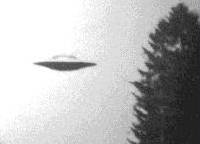Article/Document:
Scientists Find Clues That Life Began in Deep Space
NASA Ames Research Center, January 30, 2001
original source | fair use notice
Summary: Duplicating the harsh conditions of space in their laboratory, NASA scientists have created primitive cells with membrane-like structures. These chemical compounds may have played a part in the origin of life.
Text based on a NASA Ames Research Center press release
Duplicating the harsh conditions of cold interstellar space in their laboratory, NASA scientists have created primitive cells that mimic the membranous structures found in all living things. These chemical compounds may have played a part in the origin of life.
This breakthrough by scientists at NASA Ames Research Center in California's Silicon Valley is important because some scientists believe that the delivery - by comets, meteorites and interplanetary dust - of similar organic compounds born in interstellar space might have "kick-started" life on Earth.
"Scientists believe the molecules needed to make a cell's membrane, and thus for the origin of life, are all over space. This discovery implies that life could be everywhere in the universe," said Dr. Louis Allamandola, the team's leader.
Using simple, everyday chemicals, researchers from Ames' Astrochemistry Laboratory and the Department of Chemistry and Biochemistry at the University of California, Santa Cruz, have created, for the first time, "proto"-cells. These are the primitive cells that mimic the membranous structures found in all life forms. "This process happens all the time in the dense molecular clouds of space," Allamandola said.
This discovery has important implications for NASA's astrobiology mission. "The formation of these biologically interesting compounds by irradiating simple interstellar ices shows that some of the organics falling to Earth in meteorites and interplanetary dust might have been born in the coldest regions of interstellar space," Allamandola said. "The delivery of these compounds could well have been critical to the origin of life on Earth."
Their results will be published January 30 in the special astrobiology issue of The Proceedings of the National Academy of Sciences, USA.
Scientists do not yet know whether life began as naked RNA or as genetic material encapsulated in membranes. But at some point, membranes became important. "All life as we know it on Earth uses membrane structures to separate and protect the chemistry involved in the life process from the outside," said Dr. Jason Dworkin of the SETI Institute, the paper's lead author and a team member. "All known biology uses membranes to capture and generate cellular energy."
"Membranes are like a house," Dworkin added. "Maybe these molecules were just the raw lumber lying around that allowed origin-of-life chemicals to move in and set up housekeeping or construct their own houses."
In the lab, the scientists recreated the conditions found in space - which is a cold vacuum - zapping a series of simple ices with the ultraviolet radiation found everywhere. They created solid materials which, when immersed in water, spontaneously created soap bubble-like membranous structures that contained both an "inside" and an "outside" layer.
In contrast to current thinking, this new work shows that the early chemical steps believed to be important for the origin of life do not require an already-formed planet. Instead, they seem to take place in deep space long before planet formation occurs. This implies that the vastness of space is filled with chemical compounds which, if they land in a hospitable environment like our Earth, can readily jump-start life.
Interstellar ices are made of familiar everyday chemicals such as water, methanol (wood alcohol), ammonia and carbon monoxide that are frozen together.
The astrobiology research team also included Dr. Scott Sandford of Ames and Professor David Deamer of the Chemistry and Biochemistry Department of UC Santa Cruz.
Read more articles on this topic:






